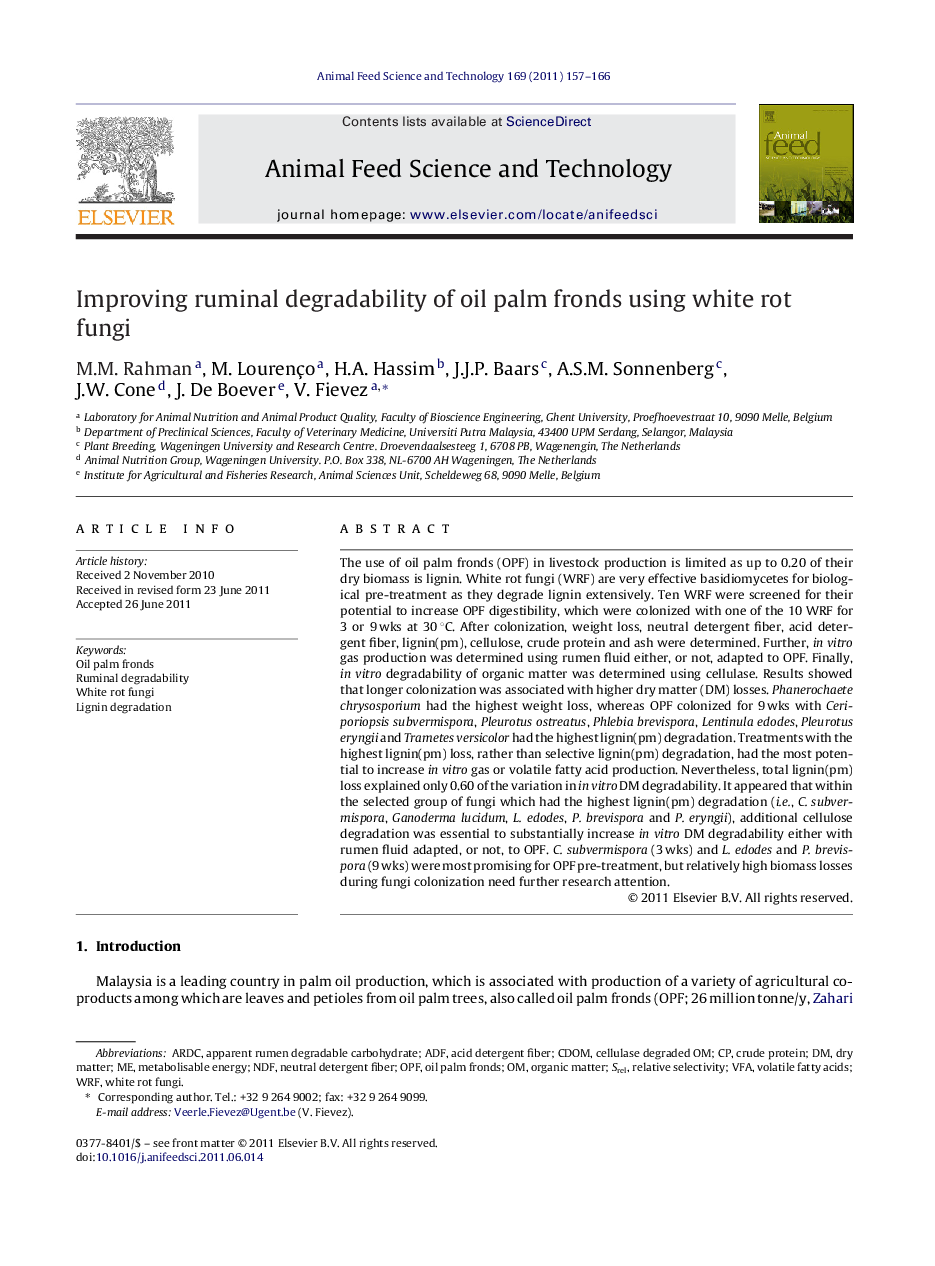| کد مقاله | کد نشریه | سال انتشار | مقاله انگلیسی | نسخه تمام متن |
|---|---|---|---|---|
| 8492233 | 1552426 | 2011 | 10 صفحه PDF | دانلود رایگان |
عنوان انگلیسی مقاله ISI
Improving ruminal degradability of oil palm fronds using white rot fungi
دانلود مقاله + سفارش ترجمه
دانلود مقاله ISI انگلیسی
رایگان برای ایرانیان
کلمات کلیدی
موضوعات مرتبط
علوم زیستی و بیوفناوری
علوم کشاورزی و بیولوژیک
علوم دامی و جانورشناسی
پیش نمایش صفحه اول مقاله

چکیده انگلیسی
The use of oil palm fronds (OPF) in livestock production is limited as up to 0.20 of their dry biomass is lignin. White rot fungi (WRF) are very effective basidiomycetes for biological pre-treatment as they degrade lignin extensively. Ten WRF were screened for their potential to increase OPF digestibility, which were colonized with one of the 10 WRF for 3 or 9 wks at 30 °C. After colonization, weight loss, neutral detergent fiber, acid detergent fiber, lignin(pm), cellulose, crude protein and ash were determined. Further, in vitro gas production was determined using rumen fluid either, or not, adapted to OPF. Finally, in vitro degradability of organic matter was determined using cellulase. Results showed that longer colonization was associated with higher dry matter (DM) losses. Phanerochaete chrysosporium had the highest weight loss, whereas OPF colonized for 9 wks with Ceriporiopsis subvermispora, Pleurotus ostreatus, Phlebia brevispora, Lentinula edodes, Pleurotus eryngii and Trametes versicolor had the highest lignin(pm) degradation. Treatments with the highest lignin(pm) loss, rather than selective lignin(pm) degradation, had the most potential to increase in vitro gas or volatile fatty acid production. Nevertheless, total lignin(pm) loss explained only 0.60 of the variation in in vitro DM degradability. It appeared that within the selected group of fungi which had the highest lignin(pm) degradation (i.e., C. subvermispora, Ganoderma lucidum, L. edodes, P. brevispora and P. eryngii), additional cellulose degradation was essential to substantially increase in vitro DM degradability either with rumen fluid adapted, or not, to OPF. C. subvermispora (3 wks) and L. edodes and P. brevispora (9 wks) were most promising for OPF pre-treatment, but relatively high biomass losses during fungi colonization need further research attention.
ناشر
Database: Elsevier - ScienceDirect (ساینس دایرکت)
Journal: Animal Feed Science and Technology - Volume 169, Issues 3â4, 3 November 2011, Pages 157-166
Journal: Animal Feed Science and Technology - Volume 169, Issues 3â4, 3 November 2011, Pages 157-166
نویسندگان
M.M. Rahman, M. Lourenço, H.A. Hassim, J.J.P. Baars, A.S.M. Sonnenberg, J.W. Cone, J. De Boever, V. Fievez,